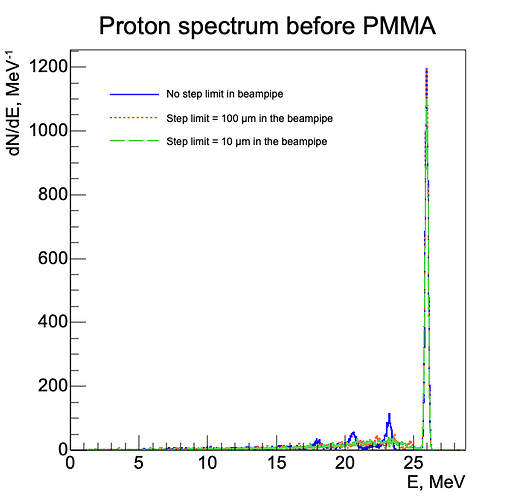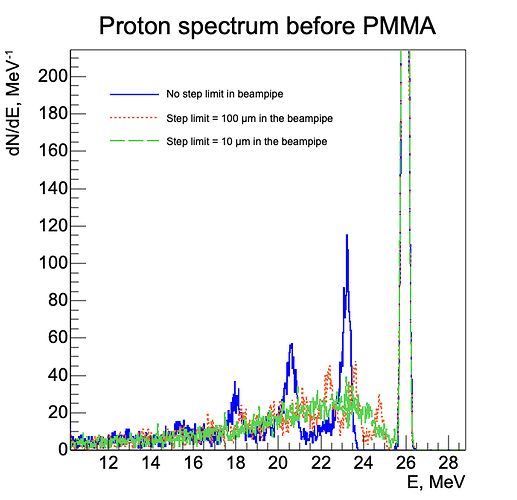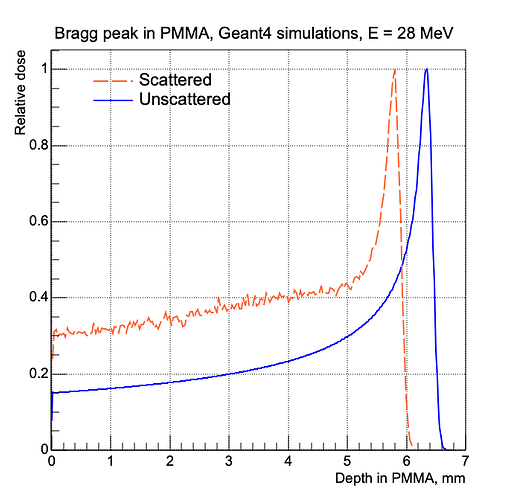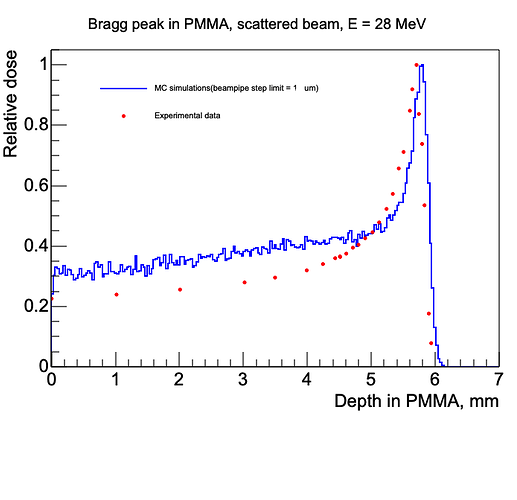Hi all,
I am involved in the dosimetric characterization of a cyclotron beamline, but Geant4-simulated Bragg peak does not match experimental data when a scattering foil is in place, while modelling an unscattered beam yields good agreement.
Briefly speaking, the beamline consists of a 80 um Ta scattering foil, Steel beampipe ~2.5 m, Kapton exit window, and a transmission chamber. Bragg peak is scored in a block of PMMA (perspex) after the beamline exit. I realized some proton lose energy while traveling along the beampipe (and this energy loss exhibits high dependence on the step length limitation), thus resulting in a low-energy tail after the beamline exit:
Besides, that low-energy tail in the simulations leads to an elevated plateau of the Bragg peak due to the lower range of lower-energy protons, see the scattered beam BP below:
My hypothesis was that as protons go along the beamline, I get more and more protons losing energy in the beamline walls and being scattered back into the beam. Ultimately, it results in a low-energy tail which, in turn, makes the Bragg peak’s plateau much higher, see below:
First, I thought that it had something to do with the internal Geant4 parameters such as step length/production cut or even StepFunction(). However, tweaking those (ultimately, I set production cut = 10 um and step length = 10 um) just led to smoother curves and not to a lower Bragg peak plateau.
Recently, I have collected experimental data with an ion chamber for unscattered and scattered beams. It turns out my hypothesis is wrong since the empirical Bragg peak for a scattered beam does not have such an elevated plateau.
No changes were observed while trying different Geant4 versions (10.07.p01/11.0.0) nor physics lists (QGSP_BIC_(HP_)EMY/EMZ, QGSP_BERT_(HP_)EMY/EMZ). Assuming that my experimental data is reliable, there should be something wrong with the proton interactions in the beampipe walls. I have done my best trying to figure out what is wrong, but with no final thought.
Would really appreciate some pieces of advice on where the issues may stem from.
Thanks in advance,
Vasily






